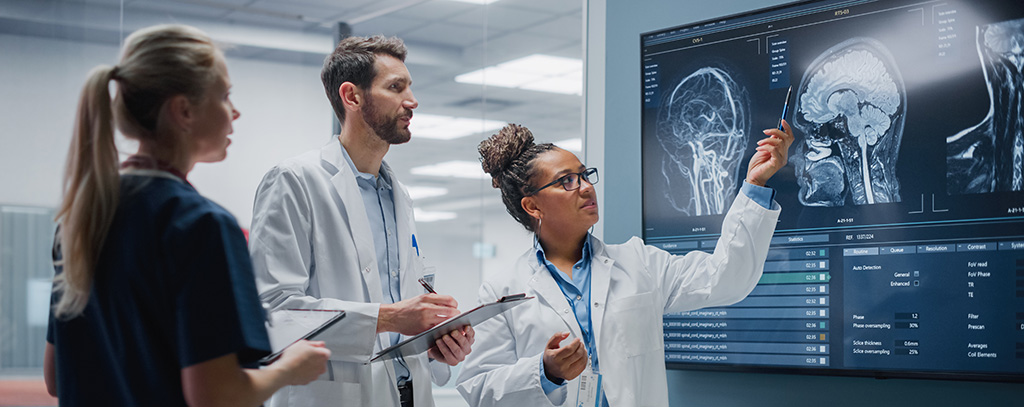


Understanding the 15 Panel Urine Drug Test for Workplaces
May 30, 2023


Ensuring Compliance: Key Regulations and Guidelines for Workplace Drug Testing
June 3, 2023What is a 12 panel drug test, and why is it becoming increasingly popular among companies seeking to maintain a safe and productive work environment? In this blog post, we will explore the intricacies of 12 panel drug tests and their increasing popularity in maintaining safe and productive work environments by delving into the benefits, types of drugs tested, as well as preparation techniques, sample collection methods and result analysis procedures.
We will explore the benefits of using a 12 panel drug test, as well as provide insights on the types of drugs tested. Furthermore, you'll learn how to administer these tests effectively by understanding proper preparation techniques, sample collection methods, and result analysis procedures.
Additionally, we will discuss cost considerations for implementing such testing measures in your organization and where to purchase reliable test kits. Finally, our discussion will cover accuracy and reliability concerns associated with urine drug tests while debunking common misconceptions about their results.
To ensure best practices when using a 12 panel drug test within your company or institution, we will also provide guidance on storage conditions for supplies along with employee training protocols. By following regulatory guidelines outlined in this post regarding what is a 12 panel drug test administration process can be seamless and efficient.
Understanding the 12-Panel Drug Test
A 12-panel drug test is a comprehensive urinalysis screening that detects various substances in an individual's system. This type of testing is often required for employment or to regain driving privileges, as it provides objective and scientific proof of abstaining from drug use. The 12-panel drug screen specifically tests for twelve different drugs, including amphetamines, barbiturates, benzodiazepines, cocaine metabolites, methadone metabolites, opiates (including morphine), oxycodone/oxymorphone metabolites (semi-synthetic opioids), phencyclidine (PCP), propoxyphene metabolite (synthetic opioid) and marijuana/cannabinoids/metabolite THC-COOH level at 50 ng/mL cutoff level.
Common Drugs Detected by the Test
- Amphetamines
- Barbiturates
- Benzodiazepines
- Cocaine Metabolites
- Methadone Metabolites
- Opiates (e.g., Morphine)Oxycodone/Oxymorphone
- Metabolites
- Phencyclidine (PCP)
- Propoxyphene Metabolite (synthetic opioid)Marijuana/Cannabinoids/Metabolite THC-COOH level at 50 ng/mL cutoff level
Employment Testing Requirements
To maintain a secure and efficient workplace, employers often conduct drug tests on potential employees as part of the hiring process. This helps ensure a safe and productive work environment by identifying individuals who may be using illegal drugs or abusing prescription medications. The 12-panel drug test is commonly used for this purpose because it covers a wide range of substances, including both common illegal drugs and frequently abused prescription medications.
Furthermore, some industries have specific regulations regarding employee drug testing. For example, the Department of Transportation (DOT) mandates that all safety-sensitive transportation employees must undergo regular drug and alcohol testing. A 12-panel urinalysis can help companies comply with these requirements while also promoting a safer workplace for everyone involved.
Understanding the 12-Panel Drug Test is a critical step in ensuring accurate results and compliance with employment testing requirements. To ensure reliable test results, it's important to consider factors such as avoiding diluted samples and maintaining integrity during collection when administering urine drug tests.
Maintaining Integrity during Collection
It is crucial to maintain integrity during collection procedures. This helps prevent false negatives and ensures reliable results. Here are some best practices for collecting urine samples:
- Chain-of-Custody: Implement strict chain-of-custody protocols throughout every step of collection process - from patient identification through storage and transportation - ensuring all parties involved handle specimens properly according documentation requirements set forth federal regulations industry standards alike (e.g., SAMHSA guidelines).
- Temperature Checks: Verify the temperature of the urine sample within four minutes of collection to ensure it falls within the acceptable range (90-100°F or 32-38°C), as this can help identify attempts at tampering.
- Specimen Validity Testing: Incorporate specimen validity testing, which checks for adulterants and abnormal creatinine levels in a urine sample, to further ensure accuracy and reliability.
Taking these precautions when administering drug tests will increase confidence in results while minimizing potential errors. By ensuring accurate detection through proper procedures, companies can make informed decisions regarding employment testing and maintain a safe working environment free from substance abuse issues.
It is essential to ensure accuracy when conducting urine drug tests, and following the proper collection protocols can help achieve that. Processing time and result interpretation are also important factors in obtaining reliable results; let's explore these further.
Result Processing Timeline
- Sample collection: The urine sample is collected from the individual being tested and tested using an onsite drug test
- Laboratory analysis: The sample is sent to an offsite laboratory for comprehensive testing using advanced equipment and techniques if the result is a positive
- Data interpretation: Laboratory technicians analyze the data obtained from the tests to determine if any of the targeted substances are present in the urine sample.
- Counselor review: A trained professional reviews the findings before preparing a detailed report on their conclusions.
Receiving and Interpreting the Final Report
The final report provided by your chosen drug testing service should include clear information about each substance screened during testing. In addition to listing any detected drugs (both illegal drugs and prescription medications), it may also provide details on over-the-counter medications that could potentially interfere with test results. This thorough approach ensures accurate detection of substance abuse while minimizing false positives caused by common medications or supplements taken legally under medical supervision.
If you're an employer, it's crucial to understand the implications of a positive drug test result for your employees. This may involve consulting with legal counsel or human resources professionals to ensure compliance with employment laws and company policies. In certain scenarios, extra testing may be essential to validate preliminary results before any disciplinary steps are taken.
By understanding the processing time and result interpretation involved in 12-panel drug tests, you can make informed decisions about how best to address potential substance abuse issues within your organization while maintaining employee privacy and ensuring accurate results.
It is important to consider the timeline of processing results and correctly interpret them before making any decisions. Professional testing services can provide an accurate, reliable result that eliminates many potential issues associated with at-home drug tests.
At-home Drug Tests vs Professional Testing Services
With the increasing need for drug testing in various sectors, at-home drug tests have gained popularity due to their convenience and noninvasive nature. Nevertheless, it is essential to comprehend the contrasts between these tests and expert testing administrations so as to settle on an educated choice about which technique best accommodates your organization's necessities.
Pros and Cons of At-Home Drug Tests
- Pro: Convenience - At-home drug tests can be easily purchased online or over-the-counter at local pharmacies, making them readily accessible for individuals or companies looking to conduct preliminary screenings.
- Pro: Privacy - These test kits allow users to perform the screening process in a private setting without involving third parties, ensuring confidentiality during the initial stages of detection.
- Con: Accuracy - While many at-home drug tests claim high accuracy rates, they may not provide definitive results as some substances might produce false positives or negatives. This could lead to incorrect conclusions about an individual's substance use habits.
- Con:Limited Detection Window - Some at-home test kits may only detect recent substance use rather than providing a comprehensive overview of an individual's history with drugs. This limitation could result in overlooking potential patterns of abuse that would otherwise be detected through professional testing services.
The Benefits of Using Professional Drug Tests
In contrast with at-home drug tests, professional testing services offer several advantages that ensure accurate detection of substance use among employees. Some benefits include:
- Certified Laboratories: A key benefit offered by professional testing services is access to certified laboratories specializing in analyzing urine samples for specific drug metabolites. This ensures that the results obtained are accurate and reliable, providing a solid foundation for any subsequent decisions or actions taken by employers.
- Chain of Custody: Professional testing services maintain strict chain-of-custody protocols to ensure the integrity of urine samples collected from individuals undergoing drug tests. This minimizes the risk of tampering or contamination during collection, transportation, and analysis processes.
- Comprehensive Detection: Unlike at-home test kits with limited detection windows, professional testing services can detect a wide range of substances over an extended period. This provides companies with more in-depth information about employees' substance use habits and patterns.
- Legal Compliance: In cases where drug testing is mandated by law or regulations (such as employment screening), using professional testing services helps ensure compliance with legal requirements and standards set forth by relevant authorities.
In light of these differences between at-home drug tests and professional testing services, it becomes clear that relying on certified laboratories for comprehensive screenings offers greater accuracy and reliability in detecting substance abuse among employees. For this reason, many companies opt to utilize professional drug testing services, ensuring they receive accurate results while maintaining compliance with applicable laws and regulations.
At-home drug tests can be an economical and practical solution for determining the existence of drugs, yet they may not always give precise outcomes. Therefore, it is important to consider professional testing services when addressing substance abuse issues after positive results.
Addressing Substance Abuse Issues after Positive Results
In cases where a confirmation drug test returns positive results, health professionals may evaluate the patient for potential substance use disorders or addiction issues. This evaluation process allows individuals struggling with substance abuse to receive proper treatment and support in overcoming their addiction.
Evaluation Process Following Positive Test Results
When an individual tests positive on a drug test, it is essential to address the issue promptly and effectively. An evaluation by a competent specialist should be the initial move to decide if there is, in fact, an issue with drugs or alcohol. This assessment will consider factors such as:
- The specific drug(s) detected during testing
- The frequency of use
- Potential risk factors for developing an addiction (e.g., family history, mental health)
- Any negative consequences experienced due to substance use (e.g., job loss, legal trouble)
This comprehensive evaluation helps healthcare providers develop appropriate intervention strategies tailored to each individual's unique needs.
Treatment Options for Individuals with Substance Use Disorders
If the assessment affirms a substance use disorder, there are various treatment options based on the intensity of the condition and individual choices. Some common options include:
- Counseling and Behavioral Therapies: These approaches aim at changing unhealthy thought patterns related to drug use while teaching coping skills needed for long-term recovery. Examples include cognitive-behavioral therapy (CBT), motivational interviewing, and contingency management.
- Medication-Assisted Treatment (MAT): MAT combines behavioral therapy with medications that help reduce cravings or block the effects of certain drugs. This approach is particularly effective for treating opioid use disorders (SAMHSA). Medications such as methadone, buprenorphine, and naltrexone are commonly used in MAT to reduce cravings or block the effects of certain drugs, while residential programs provide a structured environment for long-term recovery.
- Inpatient or Residential Programs: These programs provide a structured environment where individuals can focus on recovery without distractions from daily life. They typically offer 24-hour care and support along with various therapies to address all aspects of addiction (NIMH).
- Support Groups: Fellowship-based groups like Alcoholics Anonymous (AA) or Narcotics Anonymous (NA) can be an invaluable resource for people in recovery by providing peer support, encouragement, and accountability throughout the process.
Treating substance use disorders effectively requires a comprehensive approach tailored to each individual's needs. By addressing positive drug test results promptly and seeking appropriate professional guidance, individuals struggling with addiction have a better chance at achieving lasting sobriety.
Frequently Asked Questions What is a 12 Panel Drug Test
What exactly is on a 12 panel drug test?
A 12-panel drug test screens for twelve commonly abused substances, including amphetamines, barbiturates, benzodiazepines, cocaine metabolites, marijuana metabolites (THC), methadone, methaqualone, opiates/morphine/codeine/heroin derivatives (6-MAM), oxycodone/oxymorphone/hydrocodone/hydromorphone derivatives (OXYMORPH), phencyclidine (PCP), propoxyphene and tricyclic antidepressants.
What is Premier 12 panel drug test?
Premier 12-panel drug tests are comprehensive screening tools that detect the presence of twelve different drugs in an individual's system. These tests typically use urine samples to provide accurate results quickly and efficiently. The Premier brand ensures high-quality testing supplies with reliable performance for various settings such as workplaces or rehabilitation centers.
What are standard panel drug tests?
Standard panel drug tests screen for common illicit substances using fewer panels than more extensive options like the 12-panel test. A typical example is the 5-panel test which detects amphetamines, cannabinoids (marijuana), cocaine metabolites, opiates/opioids and phencyclidine(PCP). These basic screenings are often used in pre-employment or random workplace testing scenarios.
What is the Labcorp test code for a 12-panel drug screen?
The Labcorp Test Code for a standard Urine 12-Panel Drug Screen is 791946. This code refers to the specific test offered by Labcorp, a leading provider of clinical laboratory services. The 12-panel drug screen detects multiple substances and their metabolites in urine samples.
Conclusion
The 12 panel drug test is a reliable and accurate way to detect the presence of drugs in an individual. The 12 panel drug test is an effective tool for employers to gauge the safety and well-being of their personnel, offering assurance that they are safeguarding against potential liabilities from illicit substance use in the workplace. With proper administration, it provides companies with peace of mind that they are taking steps to protect themselves from liability associated with substance abuse in the workplace.
If you are looking for reliable and accurate drug testing supplies, Halux Diagnostic provides a comprehensive 12 panel drug test that is sure to meet your needs. Contact us today to find out more about our products and services.





